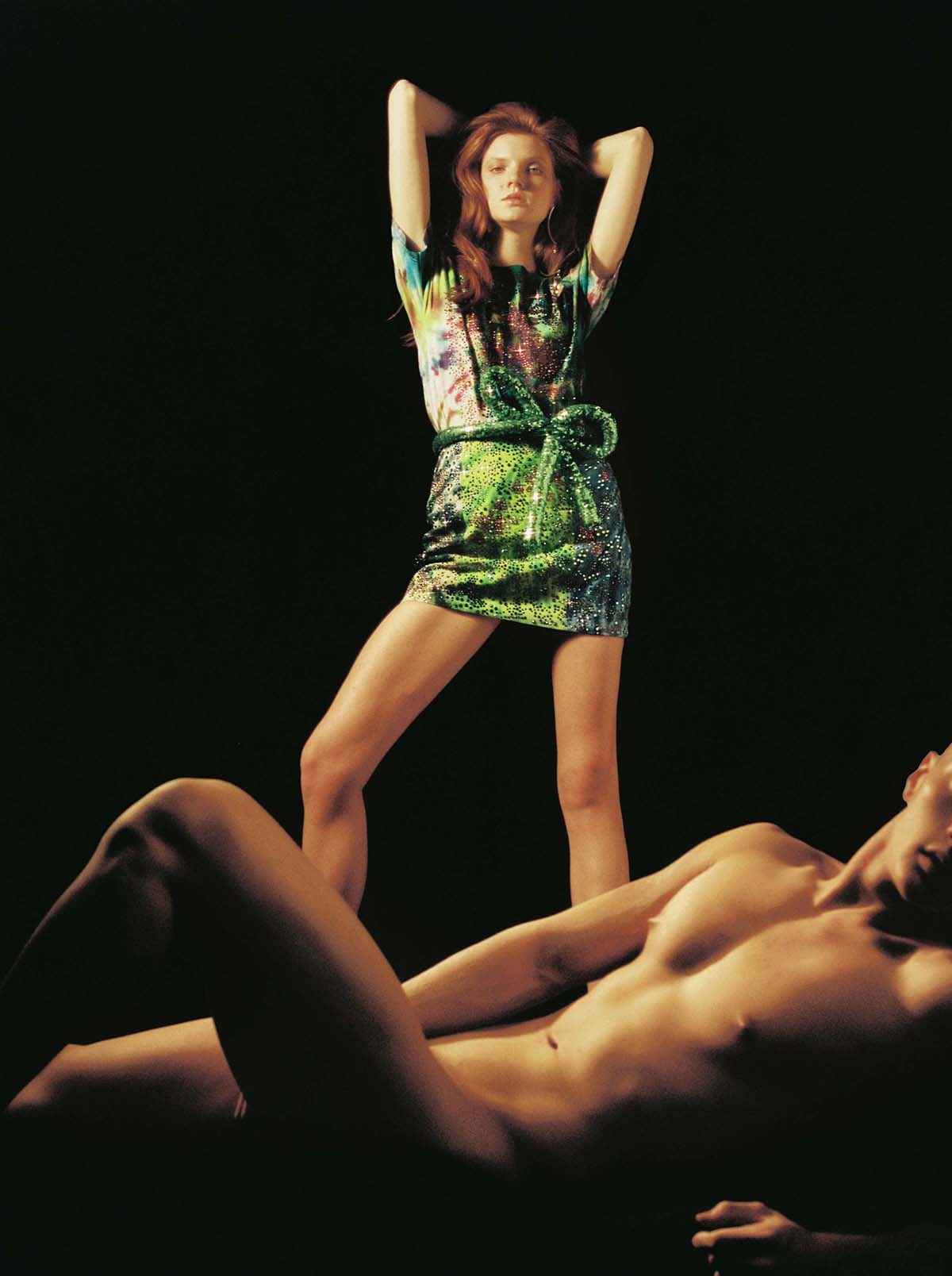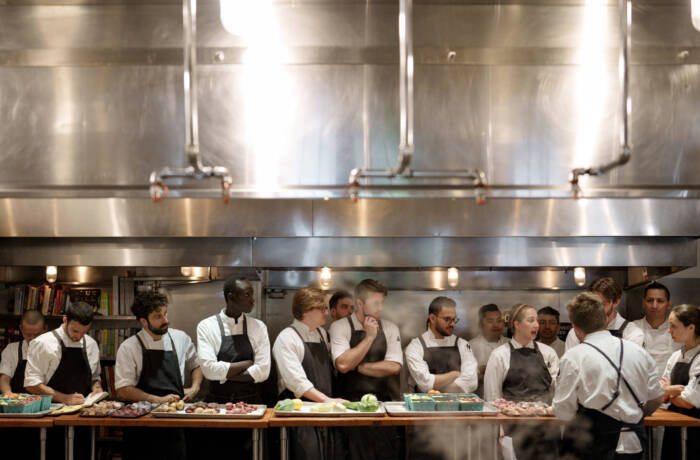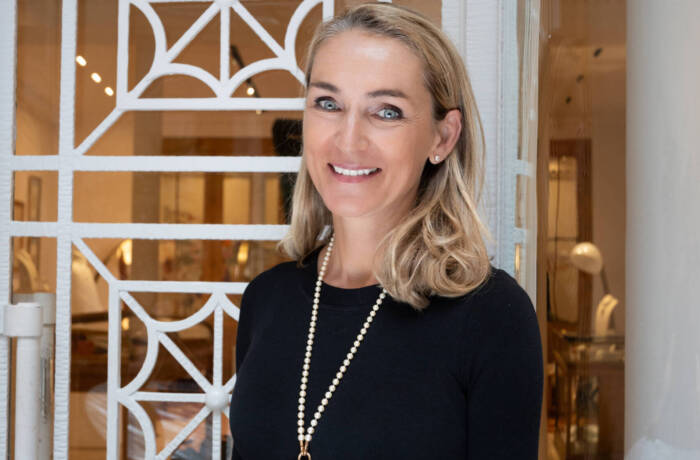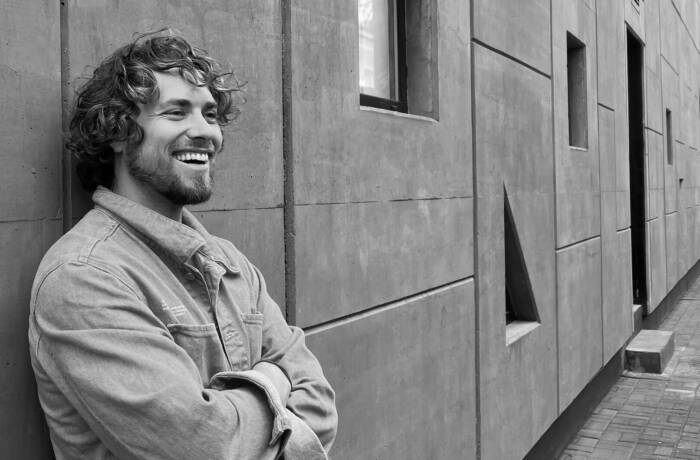
Fashion designer Kevin Germanier. Image by Alexandre Haefeli
As the fashion industry comes under scrutiny for its environmental credentials in an age of sustainability, one young designer is showing a way forward. Paris-based Kevin Germanier designs high-end clothes with upcycled fabrics and beads he culls from other brands. Far from being earnest and worthy, his designs have real sizzle, as Kristina Spencer discovers
The fashion industry is one of the world’s biggest polluters. It emits more carbon than international flights and maritime shipping combined. While the high turnover and volume of production of fast fashion is a major contributor, how do luxury brands affect the environment? With some maisons producing as many as eight collections a year, it seems inevitable that the sheer amount of output must produce waste. However, as consumer values change and conscious consumerism is on the rise, a new generation of designers is paving the way for a sustainable approach to glamorous, daring fashion. Kevin Germanier is one of them.
Follow LUX on Instagram: luxthemagazine
Germanier is only 28. The Central Saint Martins alumnus showed his first collection in 2017 and it was immediately scooped up by MatchesFashion, the London-based luxury e-tailer. It comes as no surprise: Germanier’s high-octane collections are as sustainable as it gets, with everything from zippers to buttons sourced from materials discarded by other designers and brands. His garments are covered in crystals, a deadstock (unsold stock in new condition) supplied exclusively by Swarovski, who has collaborated with Germanier since he launched his eponymous label.
Growing up in Valais, Switzerland, Germanier always knew he wanted to be a fashion designer, spending his childhood draping fabrics over his siblings. His foundation year was spent at Geneva University of Art and Design, but it was London-based Central Saint Martins he pined for. Germanier applied, having told nobody but his flatmate at the time, and after seven interviews, he was in. “My first thought at the time was, ‘Oh God, I have to tell mum and dad!’” he laughs. His parents allowed him to go, but under one condition – he must finance his studies himself. Over a summer, Germanier saved up enough money and moved to London.

Image by Alexandre Haefeli
His sustainable approach did not come about as the result of a practical PR decision; it was merely a way to make ends meet as a student. Instead of buying expensive calico, Germanier went to Brick Lane in east London and found old duvet covers, and his flatmate gave away her deadstock. Some classmates rolled their eyes, but Germanier thrived. “It is harder to find beauty in trash than to go to Shepherd’s Bush, where I can buy anything. I needed to be creatively challenged.”
Read more: Singer-songwriter Ruth B. on poetry, social media & BLM
The industry has changed since Germanier’s first year at Central Saint Martins. These days, sustainability is in vogue. “When I started, nobody cared, and now everyone is an upcycler and a sustainability student, which is a good thing,” he admits. “But when people use sustainability as a marketing tool, that’s when I find it problematic. It should be the norm; what I am doing is normal.” It was hard to source materials at the beginning, but as the word spread, his social media was flooded with messages. “People frequently offer 25 metres of organza or 25 buttons, and I say yes to everything – and find a way to make it work.”
Now in his sixth season, Germanier continues to create feminine, unapologetically glamorous silhouettes with a disco aesthetic. There are glitter-strewn dresses, sculptural jackets and statement coats, sparkling with rainbow-hued Swarovski crystals. There is a strict ‘no black’ rule, despite always wearing black himself, because “no customer is coming to Germanier to buy black trousers”. While fashion schools are frequently criticised for the lack of business education, Germanier has managed to strike the delicate balance between creativity and pragmatism, which, by his own admission, must be due to his Swiss roots.

Björk wearing a Germanier outfit at the We Love Green Festival, Paris, 2018. Image by Santiago Felipe/Getty
His adaptability is another asset. “It is one of my biggest strengths – I am very flexible,” he says, remembering how quickly he got rid of trousers that had beads on the back. A friend wore them for a day and could barely sit. “I learned to adapt the fantasy in my brain to the reality of my customer.” Germanier has had his fair share of the red-carpet moments – he has dressed Björk, Taylor Swift and Kristen Stewart, amongst others – but ultimately, the voluptuous Björk dress cannot be worn in an Uber and even celebrities change into comfortable clothes after pictures get taken at the Met Gala. “There are two ways of conceiving your business; there are your press outfits and commercial pieces, but they can still be extremely creative. You have to play on both sides, and I love it.”
The 2020 coronavirus pandemic has exposed the fashion industry’s vulnerabilities: retailers have filed for bankruptcy, brands have sold stock with unprecedented discounts, and designers came together to decry the never-ending global tour of fashion weeks. Germanier barely bats an eyelid because he does not carry any stock. “The calendar is not relevant at all. I don’t follow seasons. When it’s hot in Hong Kong, it is cold in Alaska. And we don’t follow trends. We use leftover fabric that was trendy in 2017. Eight collections a year is just too much product, and a good product takes time… People still need to get dressed, but they don’t need seven bags per week from the same brand.”
So, what is next for Germanier? “The launch of our website, the presentation of the new collection in September,” he says. “And we have made six new looks for Sunmi, the K-pop superstar. I am also currently working on an amazing order and Germanier is going to continue its slow ascent. It is hard to predict what will be next but we are fortunate enough to be able continue what we have built so far.”
View the collections: kevingermanier.com
Follow Kevin Germanier on Instagram: @kevingermanier
This article features in the Autumn Issue, which will be published later this month.








